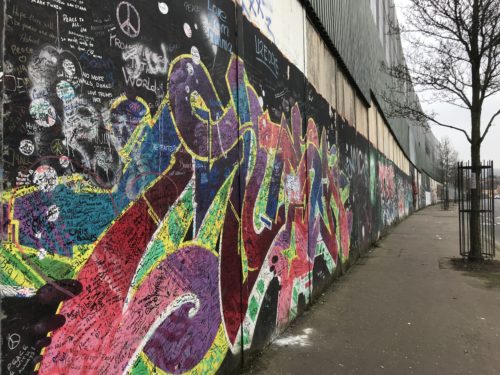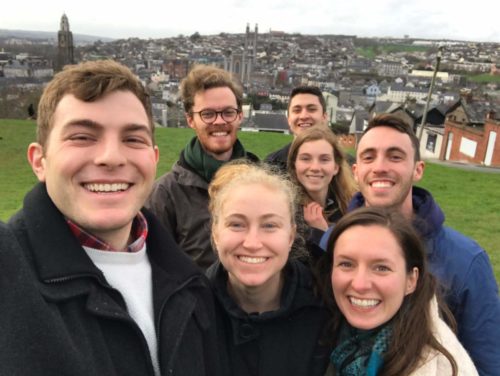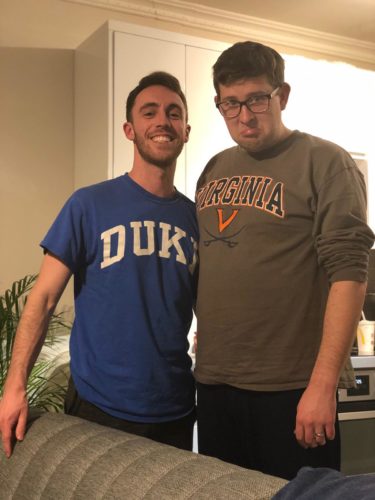I thought about writing this post on a number of recent happenings: watching the remarkable documentary film Free Solo with friends; traveling to Cork with many of the Dublin-based scholars for James’s birthday; running six miles in the pouring rain and sleet to see the new, beautifully animated Spider-Man movie, and falling ill the next day; breathing in the sea foam crashing off the cliffs of Inishmore in the Aran Islands; dealing with the collateral damage of a shattered egg in my grocery bag on the way home from Lidl the other day; among many others.
Instead, I opted for a topic I’ve been studying in great depth, both through my course at UCD on policing and social conflict, and through an extracurricular research project I’ve been co-leading on post-conflict mediation. Our mid-year Mitchell retreat in Belfast allowed me to see, for the first time, a portion of the country I’ve spent the past few months researching. The city is dynamic but still visibly, strikingly divided after all these years.
The Good Friday Agreement was signed on April 10th, 1998. Nearly twenty-one years later, much has changed. But all too much has remained the same. Towering walls cleave neighborhoods and students attend schools on the basis of the religion they have been given by their parents. At a reception held one night at Queen’s University Belfast (QUB), another scholar and I struck up a conversation with a student who had just started her first year at the university. She told us that, having attended Catholic schools from the age of five to eighteen, she had never interacted with a Protestant until she began her studies at QUB. In a city of only 295,000 people, how is that even possible?
The answer, of course, stems from the Troubles and a much longer, violent history between Ireland and England — but it also gestures more broadly to the insufficient response to the conflict in the more than 20 years that have passed since the Good Friday Agreement brought it to an end. The Eames & Bradley CGP Report (2009) concluded that 3,532 people were killed in the Troubles, and more than 2,000 of the deaths occurred at the hands of republican paramilitary groups. There were 16,209 bombings, 36,923 shootings, and 47,541 people were injured. Even more deaths and injuries occurred throughout Britain and the Republic of Ireland.
Behind these numbers lies incalculable human suffering. One report estimates that one in three people of all ages in Northern Ireland have been directly or indirectly affected by the Troubles, and one third of survivors have spoken of serious suicidal thoughts. The absence of post-conflict reconciliation, driven by uncooperative political factions, has left much trauma unaddressed to this day, both at an individual level for victims/survivors and former combatants, and at a collective societal level.
My belief — shared by several outspoken voices on the matter, including Alan McQuillan, former assistant constable of the RUC and the PSNI — is that the courts are unequipped for mending decades of sectarian violence. To date, prosecutions of individuals have utterly failed, and have simultaneously squandered resources and time. The adversarial approach of the courts, rather than reconciling people to the past, has persistently reinforced existing prejudices and fostered a continuing sense of grievance.
My research with several other scholars suggests that a carefully constructed and monitored process of mediation could provide a way forward. Unless these deep societal wounds are confronted transparently and productively by the affected communities, they will continue to fester beneath a veneer of peace, threatening to erupt in cycles of violence that could trap future generations. My hope is that in the coming months while I remain in Ireland, and in the years after I leave, people across these islands can begin to repair the immense harm that has occurred and heal their fractured communities.

Graffiti in Belfast

Scholars celebrating James’s birthday in Cork

Scholar reactions after the Duke basketball team triumphed over UVA.
